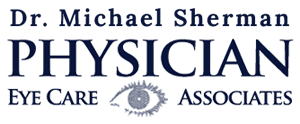
5 Questions To Ask About Cataract Refractive Eye Surgery
Throughout your life, you may go through several changes to your vision. Many people experience refractive errors, which affect your ability to focus on objects at certain distances. These are often correctable with glasses or contact lenses. Astigmatism affects the curvature of your corneas and causes vision to become blurry. Due to injury, medical conditions, or genetic factors, you may also experience a clouding of the lens of one or both eyes. This is called a cataract, and it can affect your vision by distorting the light that enters through the lens. Cataract refractive eye surgery is a relatively new technique that can correct all of these problems at once.
1. What Happens During Cataract Surgery?
Regardless of whether you choose traditional cataract surgery or more advanced cataract refractive eye surgery, the procedure involves the following steps:
- Incision: The cataract eye surgeon makes a small incision into the side of your cornea. In traditional cataract surgery, this is performed with a small hand tool. With advanced surgery, the surgeon uses a laser.
- Phacoemulsification: This is a process of breaking up the clouded lens using ultrasonic waves. The surgeon then uses suction to remove the remaining fragments from your eyes.
- Implantation: An intraocular lens is inserted into your eye through the same incision to replace the clouded one.
2. How Is Cataract Refractive Eye Surgery Different From Traditional Cataract Surgery?
Traditional cataract surgery involves a monofocal intraocular lens (IOL). This type of IOL only corrects your vision at a distance. To correct your close-up vision, you may still require bifocals or reading glasses, even after surgery. Cataract refractive surgery involves implanting a multifocal IOL that can correct your vision both close up and at a distance.
A computer programs the laser used in cataract refractive surgery to be extremely precise. This laser can reshape the cornea to correct astigmatism and get rid of the blurriness associated with it. Not only should you see more clearly due to the removal of the cataract, but you should no longer require the use of any corrective lenses following cataract refractive surgery.
3. How Do You Prepare for Surgery?
We will schedule an appointment for you about a week before surgery to perform a test to determine eye shape. This test is painless and lets us know the correct size of IOL that you need. At that appointment, we will give you specific instructions to prepare for surgery.
Typically, we ask patients to arrange for someone to drive them home from surgery and stay with them for a few hours afterward. To avoid increased pressure on the eye, we ask you to refrain from bending over or lifting anything for a few days after the procedure. We may also ask you to fast for 12 hours before the procedure or stop taking certain medicines.
4. What Happens During Recovery?
Immediately following surgery, you may experience some irritation or redness of the eyes, which is normal. Contact your cataract eye surgeon if this persists for more than a few days. Otherwise, this discomfort should resolve shortly. You may start seeing more clearly within a few hours, with your vision improving a little more each day.
5. Will Insurance Cover Advanced Cataract Surgery?
Typically, insurance coverage only extends to basic cataract surgery. Advanced cataract refractive eye surgery using lasers typically is not covered. You should check with your insurance provider to make sure of what specifically is covered and what is not. Even if your insurance does not cover your advanced surgery, we offer financing options to make the procedure more affordable for you.
We want you to feel completely comfortable with the surgery before you proceed. Feel free to ask us any specific questions you may have about the procedure.
